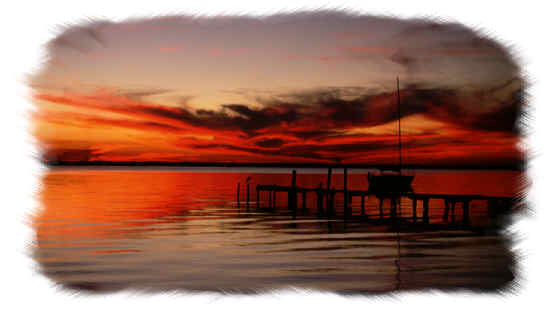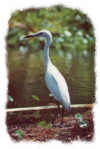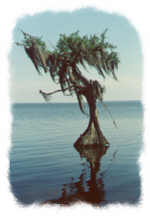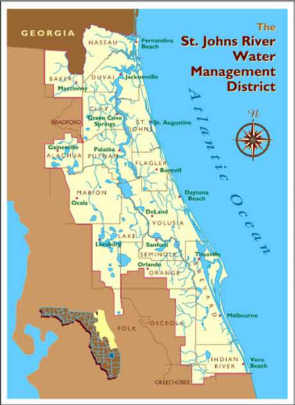
Education

Did you know the nitrogen-based fertilizers that make your grass green also make the river green - with harmful algae? The algae blooms block light to the underwater grasses and the grasses die. Those grass beds are the nurseries for fish, shrimp, crabs and other organisms in the St. Johns.
 How
does fertilizer get from your yard to the river? When it rains, fertilizer
dissolves. The runoff carries the dissolved nitrogen into storm drains,
which flows directly into the river.
How
does fertilizer get from your yard to the river? When it rains, fertilizer
dissolves. The runoff carries the dissolved nitrogen into storm drains,
which flows directly into the river.
To help, you can fertilize less often - and if you
live directly on the river you can consider the last six or more feet of your riverfront a special environment
zone where no fertilizer, weed and feed, or pesticide is applied. For even
more protection, you can adjust your landscaping to use ground cover instead
of grass next to the river.
consider the last six or more feet of your riverfront a special environment
zone where no fertilizer, weed and feed, or pesticide is applied. For even
more protection, you can adjust your landscaping to use ground cover instead
of grass next to the river.
The St. Johns River flows more than 300 miles through central and northeast Florida, from its origin in Blue Cypress Swamp to its mouth at Mayport.
Along its course, the river passes through the jurisdiction of many local, county, state, regional, and federal agencies. This maze of overlapping responsibilities makes effective management of the St. Johns River system difficult. It creates a system organized to solve problems on a piecemeal basis, ignoring the elemental truth that in nature everything is connected.
As citizens, we must strive to constantly refocus direction on the watershed as a whole, and encourage these agencies to enforce environmental laws.
Home ~
Membership ~
Meetings ~
News ~
RiverWatch ~
Hotline ~
Education ~
Board Members ~
Links ~
Photo Gallery ~
Contact
Copyright © 2004 Stewards of
the St. John's River.; all rights reserved, no portion of this site may be
reproduced in part or in whole without written permission.
Site maintained by:
MAW Productions, 2259 Laurel Grove
Lane,
Orange Park, FL 32073
